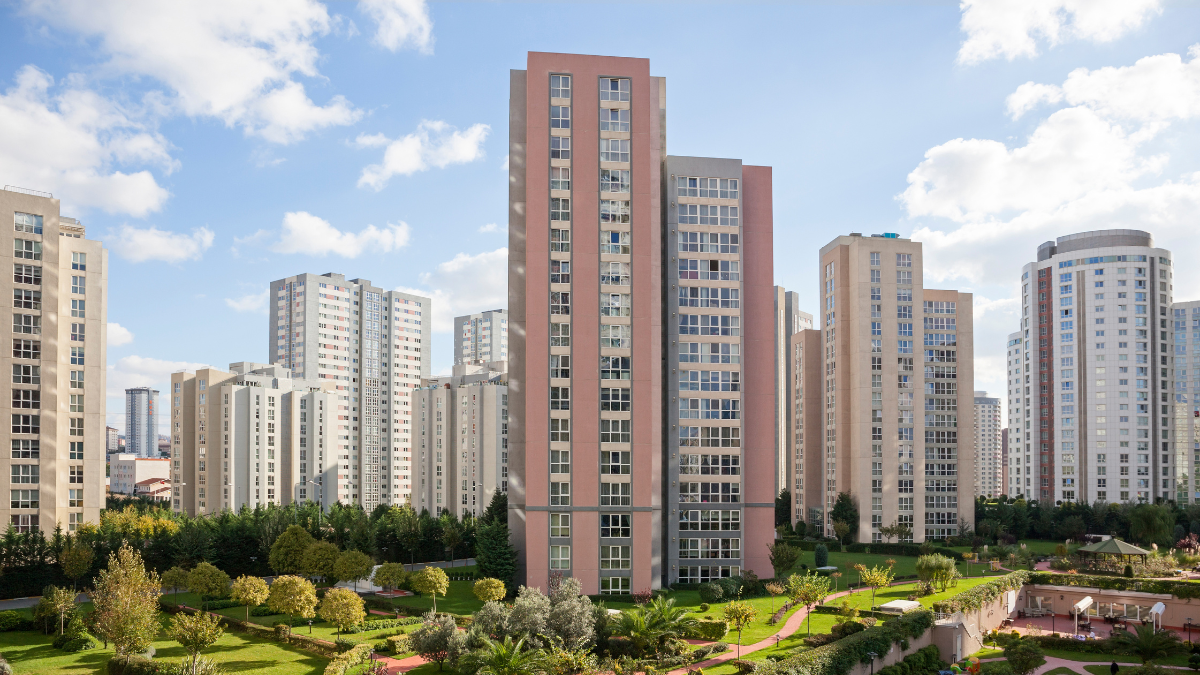
East Delhi Residents to Pay Property Tax Online
April 27, 2021 . Real-Estate Industry . 10 min readFollowing an order issued by the accessor and collector’s office, East Delhi Municipal Corporation has decided to completely move to an online mode of property tax collection. The notification issued by the civic body states that filing of returns manually has been discontinued and property tax returns will now be accepted only through online mode.
So, what is property tax and who collects it?
Property tax is a form of tax paid by a homeowner to the local government authority such as a Municipal corporation, Municipal Council or Nagar Panchayat. Revenues from property taxes are used in the development of overall civic infrastructures such as roads, lighting, utilities and other amenities. In India, property taxes are usually levied on all real estate, including buildings (residential or commercial), attached lands and improvements made on the land. The Municipal Corporation of Delhi (MCD), which is the governing body of 8 out of 11 districts in Delhi is responsible for the overall tax collection in Delhi.
How is property tax calculated?
The MCD calculates property tax based on the Unit Area System. This system takes into account the built-up area of the property, the period of construction, the structure of the building or land, location of the property, and type of property. Further, as per this system, properties in Delhi are divided into eight categories based on their valuations. Note that, the rate of property tax and its corresponding unit area value is different for all eight categories.
Apart from that, the MCD area is also divided into three zones which are North Delhi MCD, East Delhi MCD, and South Delhi MCD which impact the property tax rate based on location.
Lastly, while the computation method remains the same as per the Unit Area System, the tax levy itself may vary for different types of properties like residential, commercial or industrial.
MCD Property Tax Computation Method
The formula used for the property tax calculation by the MCD is as follows:
Property Tax = Annual Value * Rate of Tax
Annual Value = Unit area value * unit area * age factor * use factor * structure factor * occupancy factor
Rate of Tax = Tax rates corresponding to the A to H categories of the properties as published by the MCD every year. Where for the financial year 2019-20, the rate varies between 6% to 20% depending on the type of property being taxed.
Explained below are the terms used in the formulae above:
- The unit area means the built-up area of the property.
- The age factor refers to the age of the property. Which usually ranges from 0.5 to 1. (Note that new properties are taxed higher than old properties).
- The use factor is assigned by the MCD based on the usage of the property. Which usually varies from 1 to 10. Note that commercial properties are taxed higher than properties used for residential purposes.
- The structure factor refers to how the property is constructed. For instance, RCC constructions are taxed higher than semi-pucca or kucha construction.
- The occupancy factor refers to whether the property is rented out or self-occupied. Note that properties that are rented out are taxed higher than the self-occupied ones.
Given below is the MCD’s categorization of major colonies of Delhi for property tax calculations.
| Property Category | Main Colonies |
| A | Anand Niketan, Bhikaji Cama place, Friends Colony, Hudco Place, I.P Estate (Press area), Kalindi Colony, Lodhi Road Institutional Area, Maharani Bagh, Mayfair Garden, Nehru Place, New Friends Colony, Panchshila Park, Pragati Maidan, Press Area, Pushpa Bhawan, Shanti Niketan, Siri Fort Institutional Area, Sunder Nagar, Vasant Vihar, West End |
| B | Anand Lok, Andrews Ganj, Balaji Estate, Chirag Enclave, Defence Colony, Greater Kailash I II III IV, Green Park, Green Park Extn, Gulmohar Park, Hamdard Nagar, Hauz Khas, IIT Area, INA Colony, JNU Campus Area, Kailash Colony, Kilokri, Lodhi Colony, Nauroji Nagar, Navjivan Vihar, Neeti Bagh, Nehru Enclave, Nizamuddin East, Panchsheel Enclave, Qutab Inst Area, Safdarjang Enclave, Sarvapriya Vihar, Sarvodaya Enclave, South Ext, South Moti Bagh, Sukhdev Vihar, Vasant Enclave, |
| C | Alaknanda, Anupam Apartment, Aruna Asif Ali Road, Bhawani Kunj, Central Market Lajpat Nagar, Chittaranjan Park, East of Kailash, Escort Area, Firoz Shah Kotla Stadium, Kailash Hills, Kailash Kunj, Lajpat Nagar I II III IV, Malviya Nagar, Munrika Vihar, Nangal Dewat, Panchsheel Vihar, Punjabi Bagh West, Som Vihar, Vasant Kunj |
| D | Ajanta Park, Anand Vihar, Amar Colony, Anupam Gardens, Bali Nagar, Chander Nagar, Daryaganj, Dwarka, Gagan Vihar, Hudson Line, Janakpuri, Jangpura A, Jangpura Extension, Jasola Vihar, Kalkaji, Karol Bagh, Kirti Nagar, Mayur Vihar, Mohan Coop Industroa; Estate, New Rajinder Nagar, Nanakpura, Okhla Industrial Estate, Old Rajinder Nagar, Pushp Vihar,Raja Garden, Rajouri Garden |
| E | Cariappa Marg, Chandni Chowk, IAAI Colony, Indian Air Lines Colony, Khirki Ex, Madhuban Enclave, Mahavir Nagar, Pahar Ganj, Pandav Naga, Pant Nagar, Press Colony, Rohini, Shahpur Jat, Tilak Nagar, |
| F | Anand Parbat, Arjun Nagar, Daya Basti, Dilshad Garden, Freedom Fighter Enclave, Ganesh Nagar, Govindpuri, Hari Nagar, Madhu Vihar, Majnu Ka Tila, Uttam Nagar, Okhla, |
| G | Ambedkar Nagar Jahangirpuri, Amber Vihar, Badarpur, Bijwasan, Dabri Extension, Dakshinpuri, Dashrathpuri, Hari Nagar Extension, Vivek Vihar Phase I, Tagore Garden |
| H | Maidan Garhi, Mandi-Chhatarpur, Sultanpur Majra, |
Please note that the Delhi Government appoints a Municipal Valuation Committee every third year to review and determine these categorizations based on the unit rate of each colony and other multiplication factors.
Given below are the property tax rates based on the property category and property type.
| Property Category | Rate For Residential Property | Rate For Commercial Properties |
| A | 12% | 20% |
| B | 12% | 20% |
| C | 11% | 20% |
| D | 11% | 20% |
| E | 11% | 20% |
| F | 7% | 20% |
| G | 7% | 20% |
| H | 7% | 20% |
How is the rebate on property tax calculated?
The Municipal Corporation of Delhi offers the following rebates to homeowners based on property tax computation:
- In case the property tax is paid in a single instalment, in the first quarter of the year, a rebate of 15% on the total tax amount is provided.
- A rebate of around 10% of the annual value is provided to DDA/CGHS flats covering space up to 100 sq. meters.
- A rebate of 30% is provided for senior citizens, women, and physically challenged on only one property covering space up to 200 sq. meters.
- Note that no rebates are given on payments done in quarterly instalments.
Let’s say there is a self-occupied house of 100 square meters, in the category C area, constructed in the year 2019. How much property tax is to be paid?
Unit area value in Category C = ₹ 400 per sq meter
Unit area = 100 sq mtr.
Age factor for 2019 = 1
Use factor = 1
Structure factor = 1.0
Occupancy factor = 1.0
Annual Value = Unit area value * unit area * age factor * use factor * structure factor * occupancy factor
= 400 * 100 * 1 * 1.0 * 1.0 * 1.0 = ₹ 40,000
Property tax = Annual value * Rate of tax
= 40,000 * 12%
= ₹ 4,800
The property tax to be paid is ₹ 4,800.
However, in case the owner is either a female, a senior citizen or a disabled person, a rebate of 30% would be applicable and the tax payable would be ₹ 3,360.
Also, in case the entire property tax for the year is paid in a single instalment, a further rebate of 15% would be available to the taxpayer.



